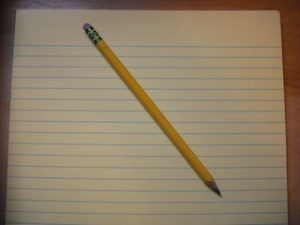 Ever wonder if you’re correctly taking notes in class?
Ever wonder if you’re correctly taking notes in class?
Do you feel unproductive or frazzled when you do take notes?
Today’s post tackles that a skill that everyone should learn: how to productively take notes.
Actively listen to your instructor.
The first step in properly taking notes is a bit counterintuitive. It does not require the act of writing or typing…in fact it starts with your ears!
Actively listen to your instructor and pay attention to what they are saying at any given moment.
Are they giving you an overview of what they’ll be covering in class that day?
Are they giving you a specific example, describing a problem and showing a solution, asking the class a question, introducing new material or reviewing old material?
The art of listening is highly underrated but if you can master this skill, you’ll be two giant steps ahead in your quest to properly and productively take notes.
Think before you write.
How many times have you seen students furiously writing or scribbling notes, copying down everything an instructor is saying?
Avoid the temptation of writing everything the instructor says; you’re not trying to write a book on the subject, you’re trying to take notes on what they are saying.
Before your pencil or pen hits the paper or your fingers touch your laptop or tablet, think for a moment about the information just presented to you.
What do you understand about the material just presented to you? What don’t you understand? Is this important information or just an aside or passing reference?
Thinking before you write can help you be more productive in that you won’t be wasting writing down information that is not worth noting.
Jot down information in broad-strokes.
Taking notes doesn’t mean you sit there writing complete sentences – that’s wholly unproductive!
It’s far easier to take down salient information in a concise and compact manner as possible.
Consider what key points the instructor is covering in class and how everything else falls into place around that.
For example, you could take notes about 1) general and sub-topics covered in class, 2) specific examples, problems and solutions of the general and sub-topics and 3) reference materials and/or books to review.
Develop your own shorthand or note-taking system.
Speed up your note-taking abilities by developing your own shorthand, code or note-taking system.
You can shorten and/or condense words, draw symbols and different images, or develop a system for keeping track of the subject of a lecture, key points and examples to save time and effort.
Creating your own shorthand or note-taking system does require some practice and patience, but once you’ve established a system, it can make taking a notes a breeze.
Now to you…how do you like to take notes? Are you a pen/pencil and paper person or do you like using a laptop or tablet? Leave a comment below and join in the conversation!





0 Comments